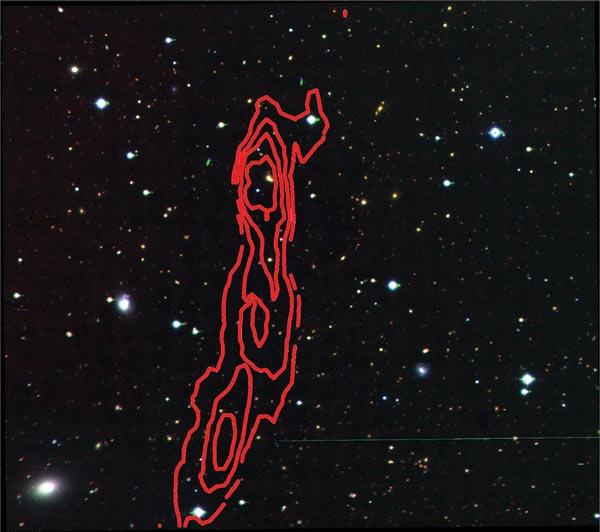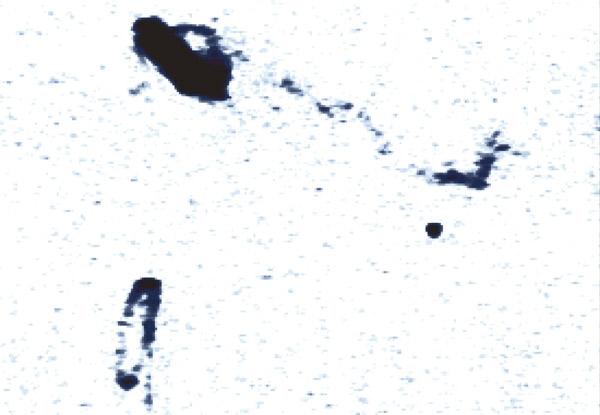Radio telescopes detect a large cloud of hydrogen gas (contour lines) where no stars can be found (Image: R Minchin/Arecibo Observatory/Cardiff U/Isaac Newton Telescope/WSRT)
Neutral hydrogen gas streams between NGC 4254 (top left) and the dark galaxy VIRGOH121 (centre right) in this radio image. The new study suggests VIRGOHI21’s gravity is responsible for NGC 4254’s lopsided shape; previously, it was thought to have been caused by an interaction with the galaxy NGC 4262 (bottom left) (Image: R Minchin/Arecibo Observatory/Cardiff U/Isaac Newton Telescope/WSRT)
22 November 2009
THE Milky Way’s neighbourhood may be teeming with invisible galaxies, one of which appears to be crashing into our own.
In 2008, a cloud of hydrogen with a mass then estimated at about 1 million suns was found to be colliding with our galaxy. Now it appears the object is massive enough to be a galaxy itself.
Called Smith’s cloud, it has managed to avoid disintegrating during its smash-up with our own, much bigger galaxy. What’s more, its trajectory suggests it punched through the disc of our galaxy once before, about 70 million years ago.
To have survived, it must contain much more matter than previously thought, in order to provide enough gravity to hold it together. Calculations by Matthew Nichols and Joss Bland-Hawthorn of the University of Sydney, Australia, indicate that it has about 100 times the previously estimated mass (arxiv.org/abs/0911.0684).
Many more such dark galaxies may be out there, says Leo Blitz of the University of California, Berkeley. Simulations of galaxy formation suggest a galaxy the size of the Milky Way should feature about 1000 dwarf galaxies, but only a few dozen have been found so far. Some of the missing dwarfs may be dark galaxies that are all but invisible, he says.
We highly reccommend New Scientist magazine . Click on the link for the complete article.


